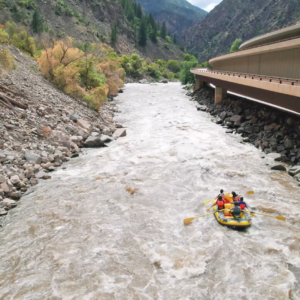
Glenwood Springs, Colorado — In early March, four more West Slope entities made substantial financial commitments toward the preservation of the historic Shoshone water rights on the Colorado River. On March 12, Basalt Water Conservancy District agreed to commit $100,000 to the effort. Earlier this month, the City of Rifle committed $100,000, and nearby West Divide Water Conservancy District, $50,000. In the Grand Valley, Palisade Irrigation District agreed to contribute $50,000 and intends to ratify this commitments at their April Board meeting.
“Maintaining the flow regime in the Colorado River sustained by historical operation of the Shoshone plant supports the Basalt Water Conservancy District’s ability to provide dependable legal water supplies to thousands of people in the Roaring Fork River basin in Eagle, Garfield, and Pitkin counties,” said Chris Geiger, spokesperson for Basalt Water Conservancy District. “This pledge is an investment for the benefit of our constituents and all Western Colorado. We are pleased to join with the River District and dozens of other Western slope stakeholders to support this critical effort.”
“West Divide truly appreciates the many years of effort the Colorado River District has put into this priority project in the Colorado River Basin,” said West Divide Water Conservancy District Board President, Samuel Potter. “As flows on the Colorado River are depleted from transmountain diversions and threats of lower basin calls loom, the Shoshone water right ensures flows are available in this reach of the river for agriculture, municipalities, recreationalists, environmental flows, and overall aesthetics of the river corridor that we call home.”
Rifle City Council provided the following statement: “The City of Rifle, whose citizens rely on the Colorado River for water, is grateful for the opportunity to partner with the Colorado River District to ensure that the Shoshone water rights are protected. Securing the Shoshone water rights is an unprecedented opportunity to safeguard the health of the Colorado River for future generations.”

